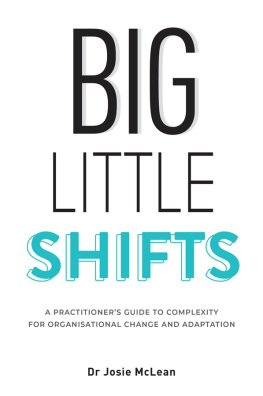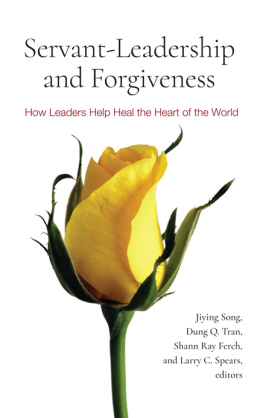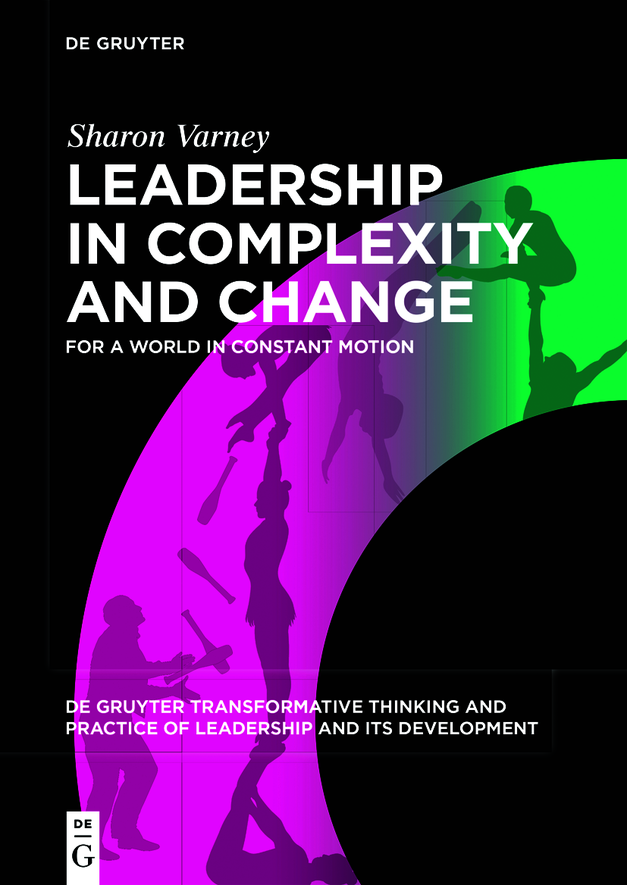Sharon Varney - Leadership in Complexity and Change: For a world in constant motion
Here you can read online Sharon Varney - Leadership in Complexity and Change: For a world in constant motion full text of the book (entire story) in english for free. Download pdf and epub, get meaning, cover and reviews about this ebook. City: Berlin, year: 2021, publisher: De Gruyter, genre: Business. Description of the work, (preface) as well as reviews are available. Best literature library LitArk.com created for fans of good reading and offers a wide selection of genres:
Romance novel
Science fiction
Adventure
Detective
Science
History
Home and family
Prose
Art
Politics
Computer
Non-fiction
Religion
Business
Children
Humor
Choose a favorite category and find really read worthwhile books. Enjoy immersion in the world of imagination, feel the emotions of the characters or learn something new for yourself, make an fascinating discovery.

- Book:Leadership in Complexity and Change: For a world in constant motion
- Author:
- Publisher:De Gruyter
- Genre:
- Year:2021
- City:Berlin
- Rating:5 / 5
- Favourites:Add to favourites
- Your mark:
Leadership in Complexity and Change: For a world in constant motion: summary, description and annotation
We offer to read an annotation, description, summary or preface (depends on what the author of the book "Leadership in Complexity and Change: For a world in constant motion" wrote himself). If you haven't found the necessary information about the book — write in the comments, we will try to find it.
Most leadership books focus on the leadership of individual organisations, leadership of complexity, and of change. They assume that we are independent from one another (we re not) and we can stand outside the flow of events, the pattern of behaviours (we can t).
As the Covid-19 pandemic has dramatically shown, we re in complexity and change, and, whether we like it or not, we re in it together. This book considers leadership in organisational systems, leadership in complexity, leadership in change. It is a small, but incredibly important distinction.
Leadership in Complexity and Change draws on complexity science to paint a picture of a world in constant motion, where leadership is enacted in-the-midst of complexity and continuous change. Part One brings complexity science to life by considering the practical challenges of complexity and its implications for leadership. Part Two then considers how leaders can reinvigorate existing tools and approaches with a new mindset, before offering some new tools and techniques for leadership in complexity and change. Part Three concludes by considering the practice and practices of leadership in complexity and change. The key ideas in this book are brought to life through mini-cases and practical examples, which are embedded throughout the book.
When I was studying for my Masters and first came across complexity science, this book was the kind of book I desperately wanted to read. I wanted to understand the implications of complexity science for organisation science and for leadership practice. I wanted to find something that broke through the unfamiliar terminology, imported from multiple disciplines, to make complexity science accessible and applicable. The problem was that the translation of complexity science to organisation science was in its infancy. The rigorous academic work required to translate insights from the physical world to the social world was embryonic. So, while complexity science provided a rich source of inspiration for writers in leadership and organisations, the application was often loose and ungrounded.
My journey has taken me from a practical problem (how to lead change in a complex organisation), to in-depth research in real organisational contexts, and widespread application of those insights to address practical problems of leadership and change. For over 15 years, I have used practice and theory to inform one another.
I have now written the book that I wanted to read. It presents complexity straightforwardly without dumbing it down. It is designed to help leaders, managers, and professionals to apply complexity thinking and tools to inform and evolve their leadership and change practice.
Sharon Varney: author's other books
Who wrote Leadership in Complexity and Change: For a world in constant motion? Find out the surname, the name of the author of the book and a list of all author's works by series.






